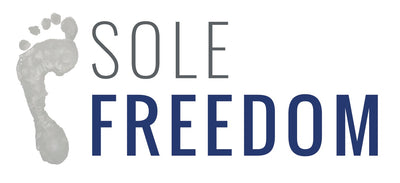In today’s Microdose for the Sole, we’re clearing up one of the most common — and most misunderstood — foot issues in the modern world:
Bunions.
Despite what many health professionals still say, bunions are not genetic inevitabilities.
They are progressive dislocations of the big toe joint — and they are both preventable and, in many cases, reversible without surgery.
Let’s break it down.
What Is a Bunion?
A bunion is the gradual displacement of the 1st metatarsophalangeal joint — the big toe drifts inward, the joint protrudes, and the foot loses its natural shape.
Most people associate bunions with age, hereditary factors, or “just bad luck.” But the real cause is much simpler and more actionable:
Bunions are an adaptive response to unnatural footwear.
Understanding Bunions Through the SAID Principle
If you haven’t already, check out our blog on the SAID Principle (Specific Adaptation to Imposed Demand). It explains why your body changes based on what you repeatedly expose it to — including your shoes.
Unnatural shoes create unnatural inputs. Over time, those inputs cause your foot to reshape, adapt, and sometimes deform.
Myth: Bunions Are Genetic
Truth: Shoes Cause Bunions
Yes, some people are more predisposed to developing bunions — especially those with wide feet or looser ligaments.
But here’s the key:
Without narrow, tapered, rigid shoes, those bunions never actually form.
Genetics may load the gun, but your footwear pulls the trigger. And most modern shoes do exactly that.
Two Major Causes of Bunions in Modern Footwear
-
Tapered Toe Boxes
– Compress your toes and pull the big toe inward -
Rigid, Stiff Soles
– Restrict natural toe movement and block extension at the big toe joint
Over years of wear, this unnatural environment trains your feet into dysfunction — leading directly to bunions and other structural issues.
How to Heal Bunions Naturally: Protect – Correct – Develop
A framework we love (borrowed from Gray Cook) simplifies the healing process into three powerful steps:
PROTECT
Start by removing the root cause: unnatural footwear.
Switch to natural shoes with:
- Wide toe boxes
- Flexible soles
- Zero heel elevation
This prevents further damage and creates a foundation for real recovery.
CORRECT
Use daily tools and practices to restore toe alignment and joint mobility:
- Toe spacers (like Correct Toes or Natracure)
- Self-massage for foot tissue release
- Joint mobilizations for the big toe
- Barefoot time to re-engage dormant muscles
DEVELOP
Strengthen your feet and build resilience:
- Balance training
- Toe yoga & splay drills
- Hacky sack foot play
- Ankle & hip mobility screening
These help reinforce the new alignment and make it stick.
But here’s the golden rule:
If you don’t protect first, correcting and developing won’t work.
Unnatural shoes will keep undoing your efforts.
Summary: The Real Cause of Bunions (And What to Do)
- Bunions are caused by unnatural footwear, not bad genetics
- Switching to natural shoes is step one to stop the damage
- Tools like toe spacers help — but they’re not the whole solution
- Consistent daily input (mobilizations, barefoot time, strengthening) leads to lasting change
- Surgery is often avoidable when you address the root cause
Want More?
We recommend:
- Dr. Ray McClanahan on the Hereditary Bunion Myth
- The Foot Collective Podcast — Bunion breakdown with Jim & Tom
FAQ: Bunions, Footwear & Healing
1. Are bunions really caused by shoes?
Yes. Narrow toe boxes and stiff soles create unnatural foot positions that lead to bunions. Genetics may influence your risk — but without bad shoes, bunions rarely develop.
2. Can bunions go away without surgery?
In many cases, yes. With consistent barefoot time, natural footwear, and corrective training, you can reduce bunion size, pain, and restore function.
3. Are toe spacers enough to fix bunions?
They help realign toes passively, but without addressing your footwear and actively strengthening your feet, they’re not a complete solution.
4. What kind of shoes help prevent bunions?
Natural footwear with a wide toe box, flexible sole, and zero heel rise helps prevent and even reverse bunion formation by allowing natural foot movement.


Comment (1)
They most certainly are hereitary..my great grandmother, a peasant who never saw a high heel or narrow toe shoe in her life, had bunions so severe, a record exists stating that her big toe was almost upside down..my grandmothers bunions were also extreme and she too, never wore fancy ladies shoes. Her daughter too had them on both feet..her son has severe bunions, as does his son. I had buions develope in my right foot at age 12.. My left has a very slight one..I had surgery on my right because walking was painful..so far my daughter has ever so slight hint of them and is careful to wear wide toe box shoes. It runs heavy in my family going at least 4 generations, makes and females..